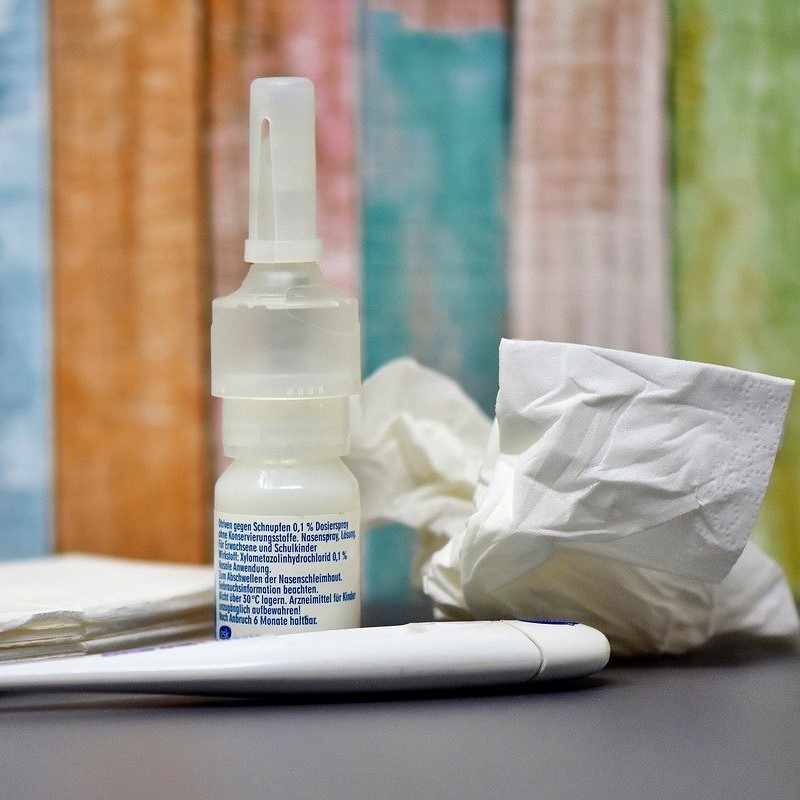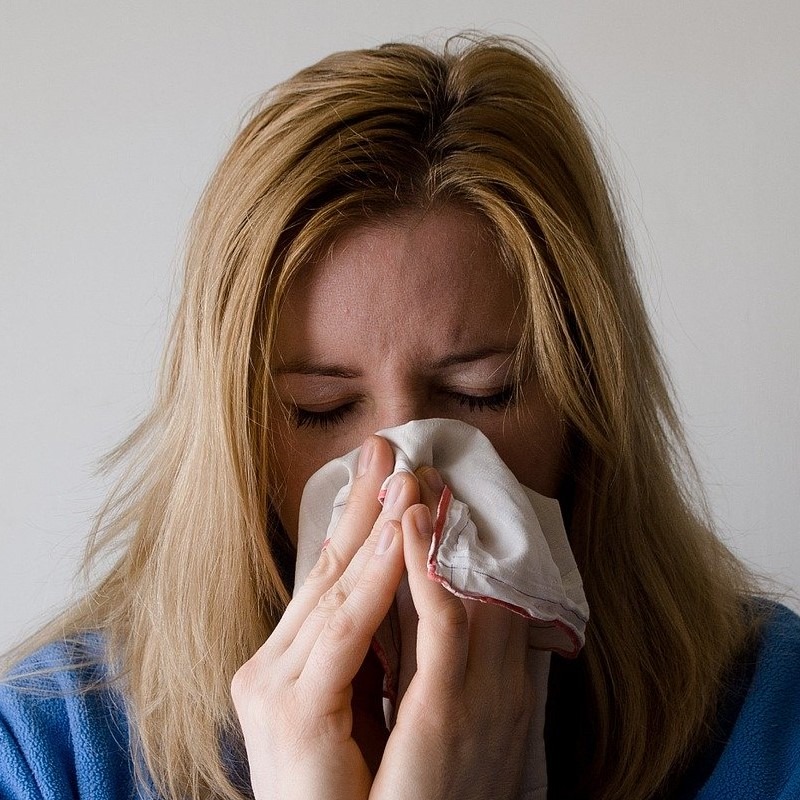What’s the most contagious disease of the moment? Always influenza, but there are outbreaks in certain areas at certain times that overshadow flu, so that’s why it’s important to create a safety-focused culture.
Also, whether it be flu or influenza-like illnesses, you will see clusters of coworker outbreaks throughout the winter. What matters are the precautions you can take to lower the probability of catching ‘it.’
Ebola may be the scariest of scary bugs. But only 3-4 cases have ever arrived in the US. Still, if you were not in Dallas in 2014 (the epidemic that led to the creation of the welloStationX™, actually) or in some areas of Africa, it does not likely affect you or those around you.
Flu Season
It’s now flu and ILI (influenza-like) season. While it occurs year-round, it is appearing in hospitals at an exponential rate. It is essential to know that you are 3x more likely to have an ILI than you are to have the flu.
Flu is one of the deadliest infectious diseases out there: it is year after year in the top 10 killers of Americans, killing 80,000 people in 2018 while infecting tens of millions each year, each for week(s) at a time.
And this flu season is shaping up to be another bad one – it’s already begun, and we might have a long spring season to end it like last year. However, flu never ends. Case reports are lower throughout the year in the US, though it persists and spreads.
Implications for All of Us
The severity of the flu season has implications for all of us – no one wants to get the flu. The most vulnerable among us are the:
- Infants and toddlers
- Seniors
- Already ill or immune-compromised
And yet, some strains of flu select for adults more often. Avoiding the flu and other infectious diseases is a matter of life and death. These are the populations the flu takes the greatest toll on every winter, and the ones it’s most important to protect.
Extra Precautions
So, if you’re in charge of caring for one or more of these groups, if you:
- Run a daycare or school
- Are a health care worker with OR without patient contact
- Head a nursing home or elder care facility
This is a time when you need to take extra precautions! The standard protocols apply:
- Hand hygiene
- Hydration
- Restful sleep
Reverse Isolation
Improved precision in helping fever screen visitors, contractors, and employees is a form of isolation. Isolation is the most effective method of preventing the outbreak or attack of a given disease.
Screening prevents contagious people who might have direct or even indirect contact with patients with compromised immune systems.
So, without screening, you’ll need other techniques to keep your compromised care clients or patients safe from the infections and worse off, secondary infections that go beyond sickening them, but threaten their lives.
Reducing Risks
Creating a safety-focused culture is one of the most important steps you can take to reduce your facility’s overall risk of infections.
- A few hand-washing areas are essential, mostly to keep you from infecting yourself from what you might have touched with viable viruses or bacteria.
- Hand sanitizer can help a lot of bugs. However, it can also create resistant strains in a facility and completely miss others, as with norovirus.
In today’s globetrotting world, infections are carried across continents in a matter of hours, thanks to air travel. For example, most measles cases recently inside the US were caused by an asymptomatic person from another country entering the country and spreading the disease unwittingly.
Combine increased international travel rates with the occasional negative attitude toward vaccination and epidemics become more common.
Begin with Leaders
So how can you create a culture focused on safety at your facility? Like all leadership initiatives, this culture shift comes from the top down and requires a deft touch.
It begins with awareness of visitors through clear messaging at the entrance or welcome desk that in your facility cares to avoid these dangers, whether you operate a daycare, school, hospital, nursing home, or jail.
If you’re feeling like there’s more you can or should do, start by getting curious. Are you doing enough research and staying up to date on infection control techniques?
You’re reading our blog, so that’s already a significant first step! Sign up for email updates to stay in the loop on everything infection-control related too.
The Weather is Important
And did you know the weather has a significant impact on infection transmission rates too? Curious about how the weather is affecting the spread of infectious diseases like the flu in your area right now?
Download our free welloWatch app from the App Store or Google Play to check for real-time updates. The CDC website is also a great source of up-to-date information. Talking to other leaders in your area can be a great source of information as well.
- How has the nursing home down the street been dealing with this flu season and visitors with possible infections?
- The presence of disease in a facility in the community is shared with other facilities in the community. So spread the word and not the germs.
- What’s the other daycare in your town doing to deal with the yearly onslaught of sick kids? Maybe they don’t have more advanced answers than you, but perhaps they have a new idea or two you can learn from.
After your outer investigations and research are done, there’s more you can do internally. Perhaps you have top-notch sanitation protocols in place, but your staff has a bad habit of coming into work when they’re under the weather.
Go deeper into these causes, such as why:
- Is your staff coming in when they’re sick?
- Aren’t they using the hand sanitizer you’ve provided all over the facility?
- Aren’t they stopping parents from dropping their sick kids off at your school, or sniffling visitors from entering your nursing home?
These questions will also require you to talk to your employees themselves – what’s holding them back from taking every step they can to prevent infections from entering your facility and running amok?
They might have some interesting answers that will surprise you – so be sure to listen carefully. Remind them that coming to with elevated body temperature is not only dangerous to others but dangerous to themselves.
Any ER/ED doctor will tell you the most common symptom they see are multiple infections and dehydration, both of them helping the other worsen.
You Need Their Buy-In
You’ve now taken essential steps to create a more safety-focused culture in your facility. But these are just the learnings.
Be sure to implement any lessons or techniques you’ve learned and share with staff why you’re changing things. Their buy-in is essential to creating a fully safety-focused culture to protect your patients and clients.
And make sure that culture is visible to all who enter your facility.
- Place signs reminding visitors of safety protocols.
- Send emails reminding parents of procedures for sick kids.
- Show them you’re dead serious. Install a welloStationX™ near an entrance to inform and ensure people are not entering with likely contagiousness.
Creating a safety-focused culture takes effort, but the rewards to your facility’s safety and reputation are worth it.

